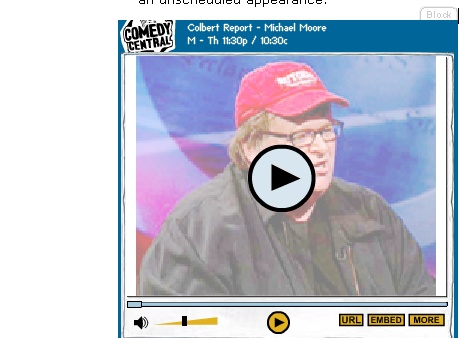Will video get a serious open source business model?


Much of the coverage has a nyaah-nyaah-nyaah quality to it. Soon, no more Colbert sneers Salon.
Not exactly. Search under Stephen Colbert on Google Video and you'll still see a lot of stuff. Some clips, like this Charlie Rose interview, or this discussion with David Letterman, were posted by the networks themselves.
The Rose interview prefaces their clip with 5 seconds showing the show's Web address. The Letterman piece includes the CBS eye in the corner of the screen. Both are high quality output.
What you won't find, of course, are clips from the shows. When Viacom sued Google over YouTube postings, Google responded by excluding Comedy Central video links from its listings.
What is missing from the whole debate is a business model and, in fact, such a business model should be easy to develop.
You're talking about numerous audiences of one. Insert a 10-second ad, add a one-pixel .gif that can track the clip, and you've got something even Nielsen can love.
It should not be hard in theory for YouTube, or any other video source, to automatically place ads and tracks in front of uploaded content, and account for online usage, even from third-party sites, like blogs, which embed the clips.
There would be some loss of audience from up-front ads, but there would also be cash flow, which could be distributed to professionals and amateurs alike. Problem solved.
Fact is even Viacom wants its videos distributed. Colbert and The Daily Show are showing up on blogs right now. (That's a screen grab from one such clip.) Viacom content includes embed commands -- they just want their trade dress surrounding the clip. Bloggers are complying.
So permission is not the issue. Whether you should see copyrighted material online is not the issue.
Business models are the issue, and the creation of an open source business model for video remains the only issue. It's an issue we can solve.